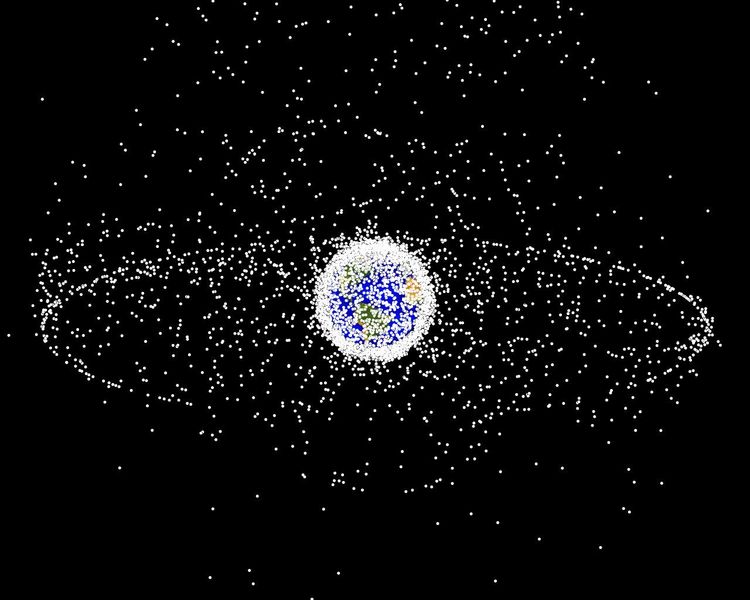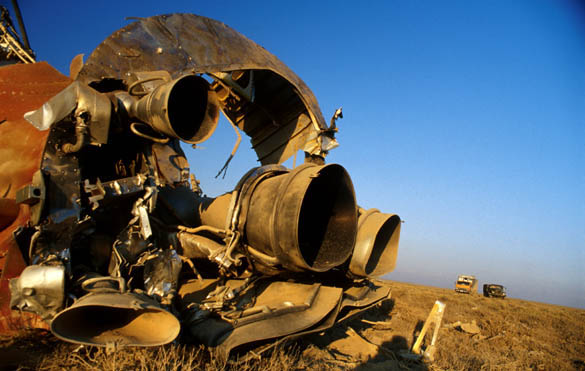We’re total litterbugs. Here on Earth, and out in space. What are some strategies that have been developed to clean up all that junk in space and make it safer to explore?
Humans are great at lots of things. We’ve built amazing landmarks, great works of art, and have a legacy of unique cultures and languages spanning the globe…
We’re also great at not cleaning up after ourselves. As if the oceanic garbage patches weren’t enough, humans are actually filling space with junk too.
That’s okay, right? Space might be infinite, and if you average the amount of stuff we know about versus the amount of space, there’s barely anything out there at all. Space can handle all that junk, right? Right? Sure it can! Space is just fine. Don’t you worry for one second about space. Space is big. Sure it’d kill us in a heartbeat, but it’s got no feelings to hurt! It’s just space!
Now I’m going to encourage you to be a little selfish, as this actually a problem for us. I know, it’s hard to believe that somehow, with our baked-in levels of neglect, we’re creating a global problem for us and future generations. I feel like this our thing now. It’s what defines us. Our littering up of space might prevent humans from ever being able to escape our planet again.
Here’s the deal. In the decades that humans have been launching stuff into space, nobody ever thought too hard about what we should do about our rockets and satellites after we’re done with them. It’s not like you can ever fill up space.
Astronomers are currently tracking 19,000 individual objects larger than 5 cm, and there are likely more than 300,000 objects smaller than 1 cm. All this stuff sticks around and continues to orbit the Earth. Over time debris collides with more debris, creating smaller and smaller pieces of space junk.
Some scientists are concerned that we might reach a point where this junk forms an impenetrable shield of shrieking metal around the Earth, that would tear apart any spacecraft that tries to leave our planet. I like to call this the “Spacelitter Singularity”. It’s an unstoppable cascade of collisions and chaos that converts the area around the Earth into a relentless blender of progressively smaller and smaller high velocity projectiles. Which would be bad.

So, how do we avoid that? How can we minimize the amount of space junk we throw into orbit? And how can get rid of the garbage that’s already out there? For starters, anyone launching stuff into space needs to minimize the amount of debris they generate. Rockets should maneuver back into the atmosphere to burn up. Astronauts need to keep track of their tools and gloves.
Engineers would also need to plan out what will happen to their spacecraft at the end of their lives. Instead of letting them just die, mission controllers need to be able to maneuver spacecraft into a safer parking orbit, or alternately, back into the atmosphere.
Something will need to be done with the space junk that’s already out there, chopping itself into smaller and smaller pieces. One idea is to have a one-up, one-down policy rule for companies. For every spacecraft they launch, they collect and de-orbit another spacecraft in roughly the same orbit. Or we could create a special junk removal spacecraft.

These would use efficient ion engines to track and dock with pieces of space junk, collecting them together. Once the spacecraft had collected enough material, or run out of fuel, it could be safely de-orbited, or possibly transform into garbage truck Voltron.
The most awesome idea I’ve come across is to build a space-based laser system that could target and fire on pieces of space debris as they go by. Small pieces would be vaporized, and larger objects would be slowed down as the vaporization would act as a decelerating thrust, lowering their orbit. That’s right, one solution is to build a real life game of Asteroids.
Once again, a lack of forethought has a created a problem that will trouble future generations. Getting into space in the first place is super hard, and cleaning it up is going to take more work than we ever thought.
What do you think? How should we clean up space to make it safe for future generations of space faring humans? Tell us in the comments below.
And if you like what you see, come check out our Patreon page and find out how you can get these videos early while helping us bring you more great content!


Good article:
Ultimately, the inability to leave Earth’s surface due to Kessler Syndrome (debris cascade) could become a serious Human existential threat.
Small debris in high orbits, which could threaten Man’s ability to construct and get to our space stations, may need to be removed by massive absorptive materials such giant kevlar balloons. But first we need to perform careful experiments to assure ourselves that such balloons don’t actually create more debris than they absorb.
If this strategy works, it may become highly beneficial to manufacture these balloons on the Moon and “lower” them into appropriate transitional Earth orbits possibly by using a Lunar Elevator.
The underlying question: Who will pay?